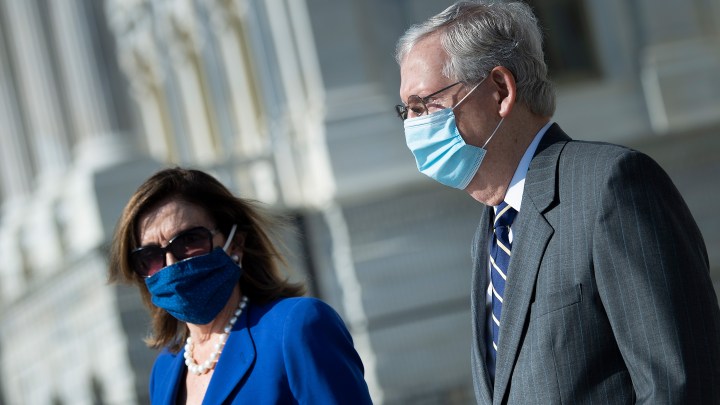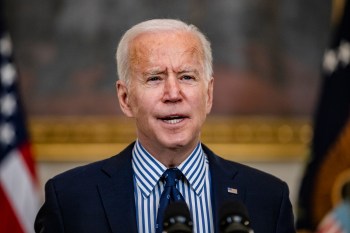
With a divided government likely, chances of a big economic relief plan wane
With a divided government likely, chances of a big economic relief plan wane

As of Wednesday afternoon, the makeup of the U.S. Senate remains in doubt, but it’s seeming less and less likely that Democrats will take control of the upper chamber, though they are on track to keep control of the House of Representatives.
Translation: divided government.
Had there been a clear blue wave over the White House and Congress, Ian Shepherdson, chief economist at Pantheon Macroeconomics, expected lawmakers to spend $2 trillion to juice the economy.
That’s the same amount provided by the Coronavirus Aid, Relief and Economic Security Act passed in the spring, which supplied economic relief checks for people out of work, families and small businesses.
Now, he said he expects a far smaller boost.
“As we saw in the spring, the CARES Act put money into people’s pockets extremely rapidly because of the one-time stimulus payments, and because of the enhanced unemployment benefits, $600 a week to everybody,” Shepherdson said.
He said congressional spending works much faster, and in a more targeted way, than stimulus from the Federal Reserve.
“From an economist perspective, it’s a no brainer,” he said.
The Fed is meeting Wednesday and Thursday, and already slashed short-term interest rates in March.
“The question then becomes, what exactly can they do?” said Matthew Luzzetti, chief U.S. economist at Deutsche Bank Securities. “They’ve already cut interest rates to zero.”
Every month, the Fed buys $120 billion worth of bonds to push down longer-term interest rates. Going forward, Luzzetti said the Fed could pledge to buy more bonds or signal it’s willing to keep buying for a long time.
“The intent would be to put more downward pressure on interest rates, hopefully ease mortgage rates as well, to provide as much stimulus as they can to the economy in the absence of fiscal,” Luzetti said.
It’s important how the Fed communicates its plans. Liz Ann Sonders, chief investment strategist at Charles Schwab (a Marketplace underwriter) said this spring the Fed’s messaging settled nervous markets.
“Simply the Fed saying, ‘We’ve got the tools, we’ve got the ammunition,’ sort of pulling out the bazooka but not necessarily needing to use it, we saw the power of that. So my guess is, they would try to sort of use their words, to put it very bluntly,” she said.
Still, Fed Chair Jerome Powell has said the Fed needs help from Congress. In a speech last month, he said too little stimulus “would lead to a weak recovery.”
There’s a lot happening in the world. Through it all, Marketplace is here for you.
You rely on Marketplace to break down the world’s events and tell you how it affects you in a fact-based, approachable way. We rely on your financial support to keep making that possible.
Your donation today powers the independent journalism that you rely on. For just $5/month, you can help sustain Marketplace so we can keep reporting on the things that matter to you.


















